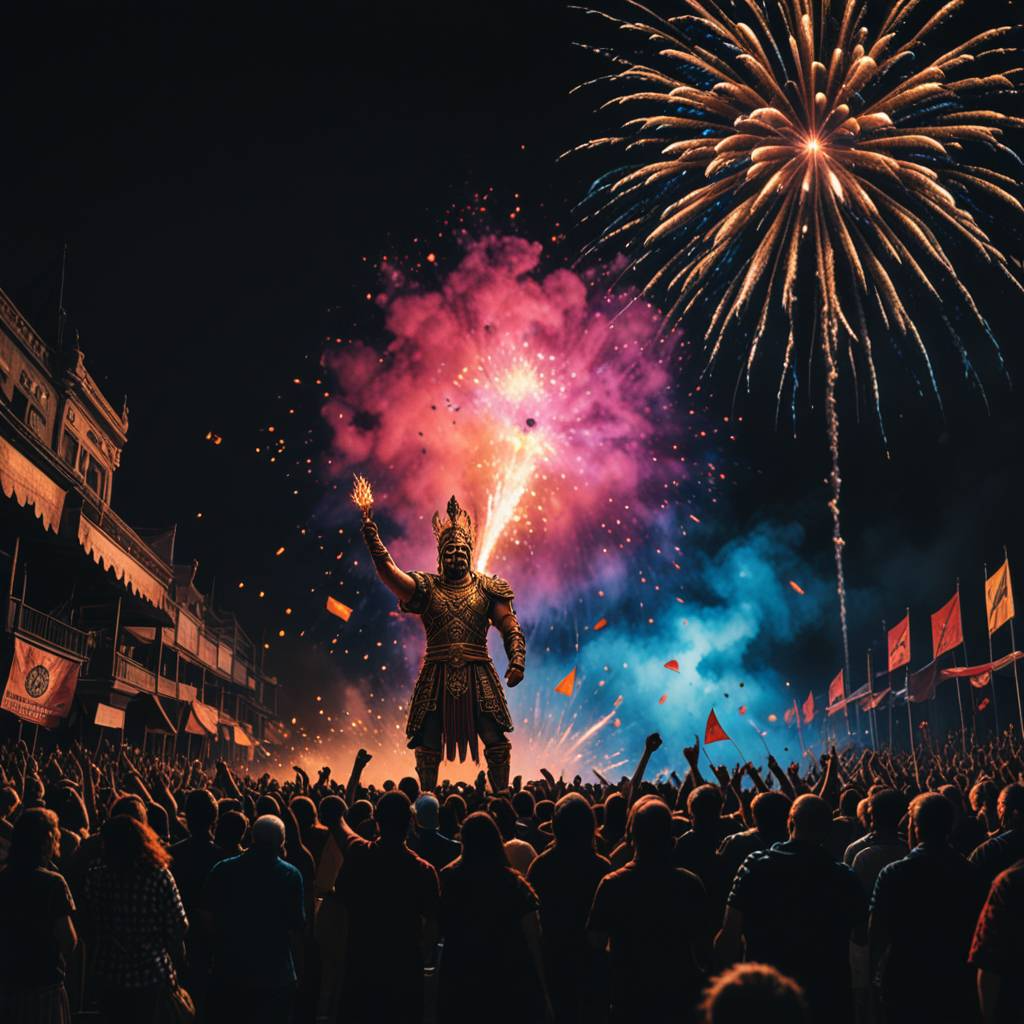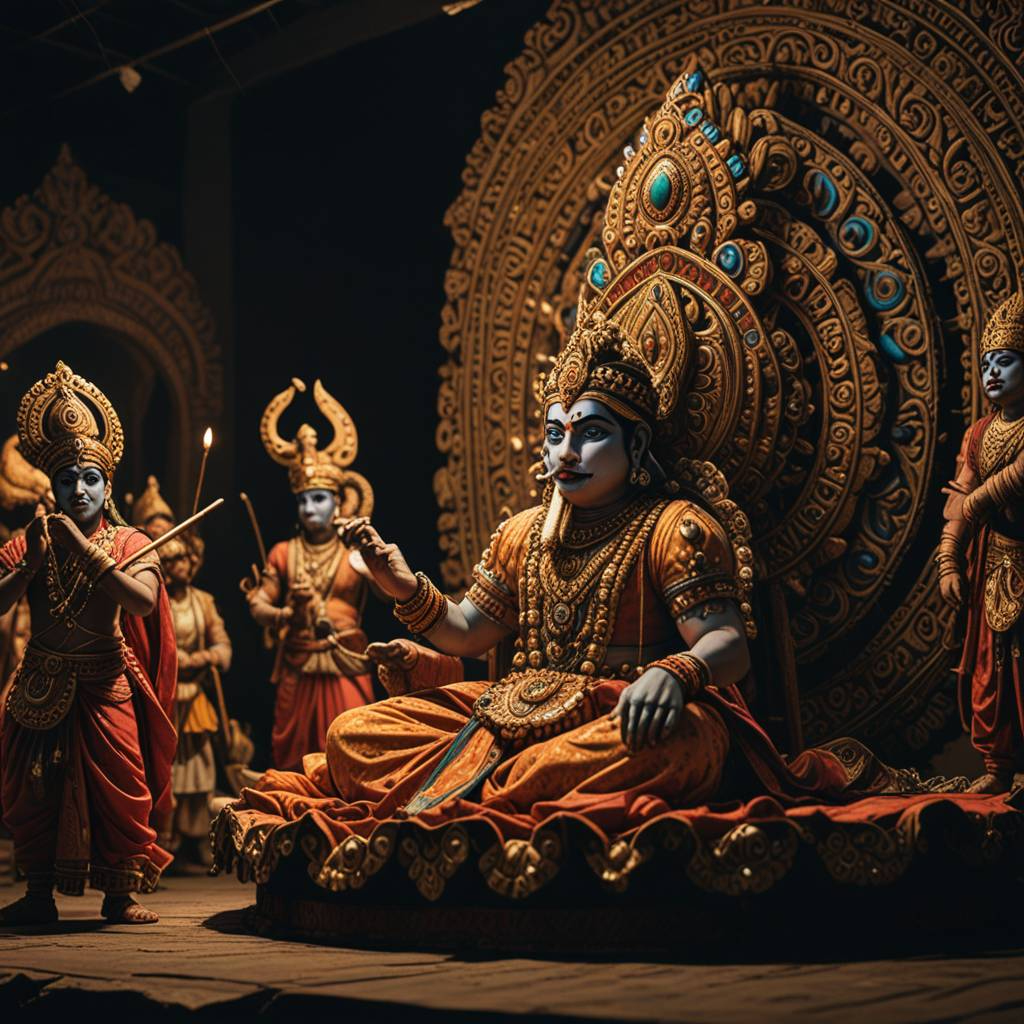Dussehra Festival : A Deep Dive into Traditions and Practices
Dussehra Festival is regarded as one of the most prominent festivals in India; it is enthusiastically celebrated across the country. This festival signifies the triumph of good over evil, and it is filled with cultural and spiritual importance through ancient texts and traditions. Here’s an overview of how Dussehra is celebrated.
The Significance of Dussehra
Two important events are associated with Dussehra:
The Victory of Lord Rama:
This theme revolves around the killing of the demon king Ravana by Lord Rama as told in the epic Ramayana. It is a symbol of victory of dharma over adharma.
The ten heads of Ravana symbolize the ten evils with which the human being has to fight: lust, anger, greed, attachment, egoism, jealousy, pride, delusion, theft, and violence.
Victory of Mother Goddess Durga:
In most regions, Dussehra coincides with Durga Puja, a festive season in which the goddess Durga has emerged victorious against the buffalo demon Mahishasura. It is the embodiment of feminine potency and power harnessed for the purpose of protection.
Traditional Variations
Dussehra is an activity that assumes dissimilar connotations across various parts of the Indian nation. This is its interpretation in most states:
The Significance of Dussehra: Triumph of Good Over Evil
Dussehra festival is known as Vijayadashami and is one of the most important festivals in India. The festival gains greater eyeballs in different places with much enthusiasm and celebration. The festival signifies victory with abundant cultural, spiritual, and moralistic values. Let’s gain more knowledge about the importance of Dussehra.

mportance of Dussehra – 1. Significance: Victory of Good Over Evil
Essentially, Dussehra is a day that represents the triumph of God Rama over the evil king Ravana in the epic called the Ramayana. This battle on the field represents the grand struggle of all time between good and evil. Celebrating this victory in Dussehra reminds us how truth triumphs in the long run and encourages people to fight against evils in their lives.
2. Moral Teachings and Ethics
All stories related to Dussehra convey vital moral lessons:
Ethical Life: He gets respect by following duty and righteousness with the personality of Lord Rama.
Following the integrity in the light of adversity: The festival educates and encourages people to never give up but fight against their personal struggles.
Mercy and Forgiveness: The festival reminds people about mercy, forgiveness, and also not forget the love related to the forgotten case of Rama for others, even enemies.
3. Cultural Heritage and Community Bonding
Importance of Dussehra in Community Repute and Culture
The festival brings family members together for celebration, which instills social bonds as well as social culture.
Performance of culture: Ramlila and other performances do indicate local culture that makes people conscious and takes them to social bonding
Public celebrations like burning effigies and community fairs help in congregating people and remove the gaps between various groups and cultures
4. Celebration of Feminine Power
In many places of the world, Dussehra is Durga Puja or the triumph of Goddess Durga over the buffalo demon Mahishasura. This aspect highlights feminine power and the role of women fighting evil forces, therefore strength, courage, and protection.
5. Reflection and Renewal
Dussehra is a day for reflection and personal renewal:
Self-Reflection: The festival makes people think about their lives and analyze. Here, the message is to identify and suppress those thoughts which evoke that societal ghostly bug that usually lies in the depths of the heart, like extreme greed, rage, or jealousy.
Decision to Positivity: The urge is inspired to change their life for the better side. The message somehow helps people feel that they, too, can change the negativity.
6. Spiritual Significance
Dussehra has a deep, in-depth meaning for many from the spiritual perspective:
Prayers and Rituals: People perform prayers and rituals to please the gods as a way of enhancing their faith in religion.
Bond with Tradition: The festival helps to connect the person with his or her culture and heritage, thereby creating a feeling of belonging as well as tradition.
7. Unity in Diversity
Dussehra is observed in various ways by every state in the country, hence this is a perfect example of the good diversity that exists in the country:


Regional Diversity: The rituals, customs and food associated with Dussehra differ with every region, but together they form the very fabric of the nation.
National Feast: Region-wise differences notwithstanding, the core message of good prevailing over evil brings people together, irrespective of their culture and community, and encourages integration.
1. Ramlila Shows
Description: Ramlila is a dramatic play that depicts the life of Lord Rama and his battle with Ravana. They are staged in public places, so all people, regardless of their social or economical status, can watch them.
Importance: They will educate the audience about the lessons of dharma and the morals from Ramayana.
2. Chamata Viraha
The Rituals: Most common and prevalent practices are burning of giant cutouts of Ravana, his brother Meghnath, and his son Kumbhkaran. They perform this ritual on Dussehra eve.
Symbols: The activity portrays the triumph of good over evil as well as the burning of evil. They have fireworks, which make the celebration even more memorable.
3. Family Get-together and Foods
Celebration with Loved Ones: Families come together to celebrate Dussehra, and food shared and traditional sweets are all part of the norm. It is time to bond and reaffirm family ties.
Traditional Foods: The local foods differ, but sweet dishes include jalebi and gulab jamun, and savory snacks.
4. Decorating Homes and Temples
Festive Decor: Homes decorated with flowers, lights, and rangoli, or floor color design, to make the mood rejoiceful.
Prayer and Rituals: Many temples conduct specific prayers or puja for the various gods and goddesses, and the devotees are invited to seek their goodwill.
5. Cultural Programs and Fairs
Melas and Cultural Events: Usually, all societies conduct fairs where music, dance, and local culture is showcased. It thus brings about a feeling of oneness and transmits the culture.
Artisan Shows: The local artifacts and articles can be displayed. It encourages the artisans in the local culture.
Modern Celebrations
In recent times, Dussehra events have developed to be relevant in the contemporary world and gave birth to new additions:
1. Virtual Celebrations
Virtual Engagement: With the continuous emergence of technology, virtual Ramlila performances and get-together online events have become a reality. The distance between different people cannot prevent them from watching these celebrations.
Social Media: Many people share their celebrations and experiences on social media, spreading the festival delight to a larger audience.

2. Eco-Friendly Practices
Sustainability Focus: There is environmental friendly celebrations, such as for example biodegradable materials are being employed in decorations and effigies
Community Initiatives: Communities are doing clean-up exercises and are sensitized on sustainability during the celebrations
3. charity and benevolence
Giving: many will take this opportunity to engage in charitable activities such as donating food, clothing or organizing community service projects.
Unity and Support: These acts depict the underlining principles of compassion and social responsibility in the festival, thus creating a feeling of unity.
Reflections on Dussehra
Dussehra is indeed an invitation to delve deeper into the celebrations. It is a vivid reminder that good and evil will forever coexist but this eternal struggle must make the living stand by virtues like integrity, compassion, and perseverance in their lives. Thus, the festival invites self-examination, and one should face his or her internal demons and act towards betterment.
Conclusion
Dussehra is all color and richness, culture, morality, and spirituality. The celebration, in its traditional rituals or trendy adaptations or acts of goodness, asks us to reflect and celebrate the power of goodness in our lives. As families and communities set out to celebrate Dussehra, let us celebrate the same spirit of joy, love, and compassion that accompanies everyone around. Wishing you all a joyous and meaningful Dussehra!

